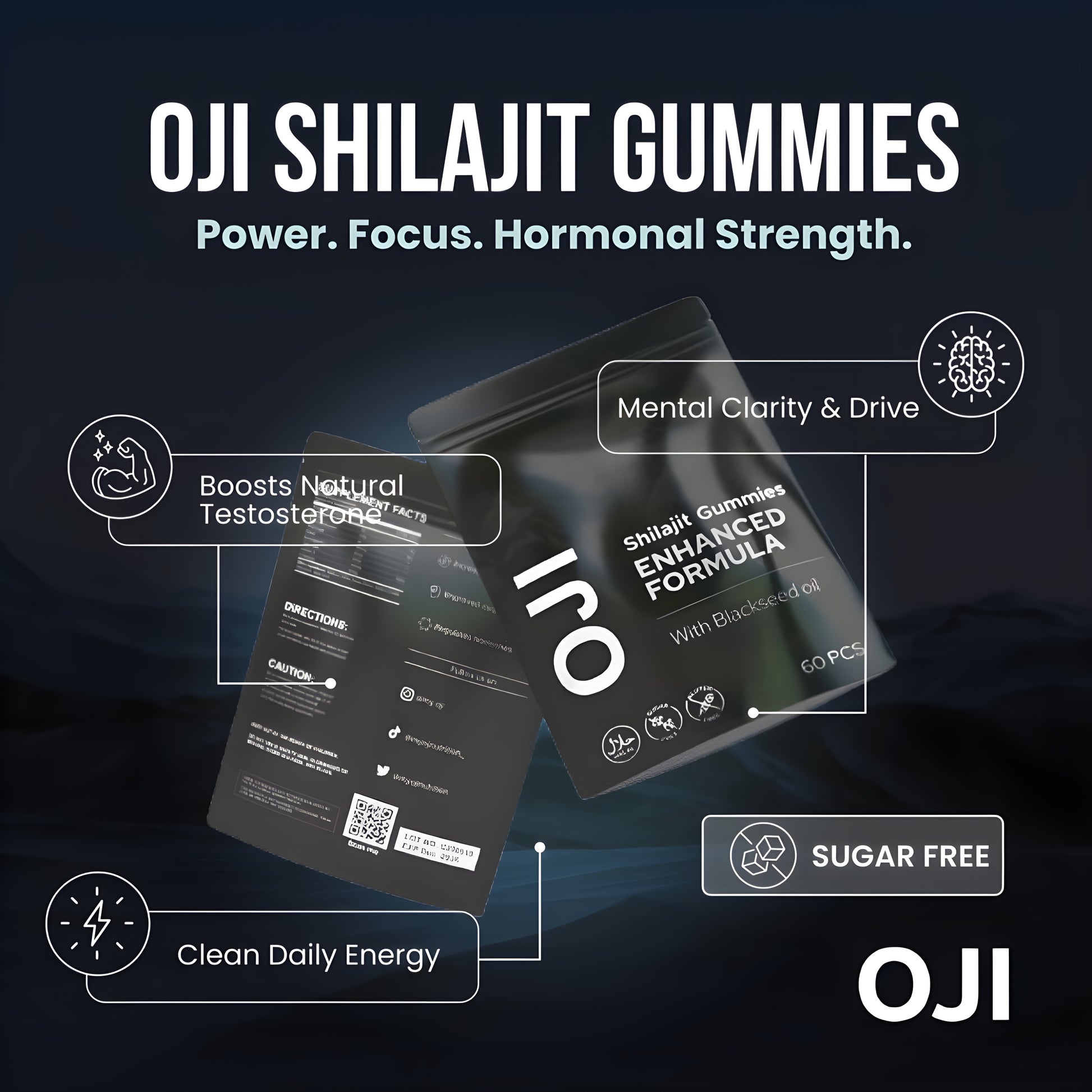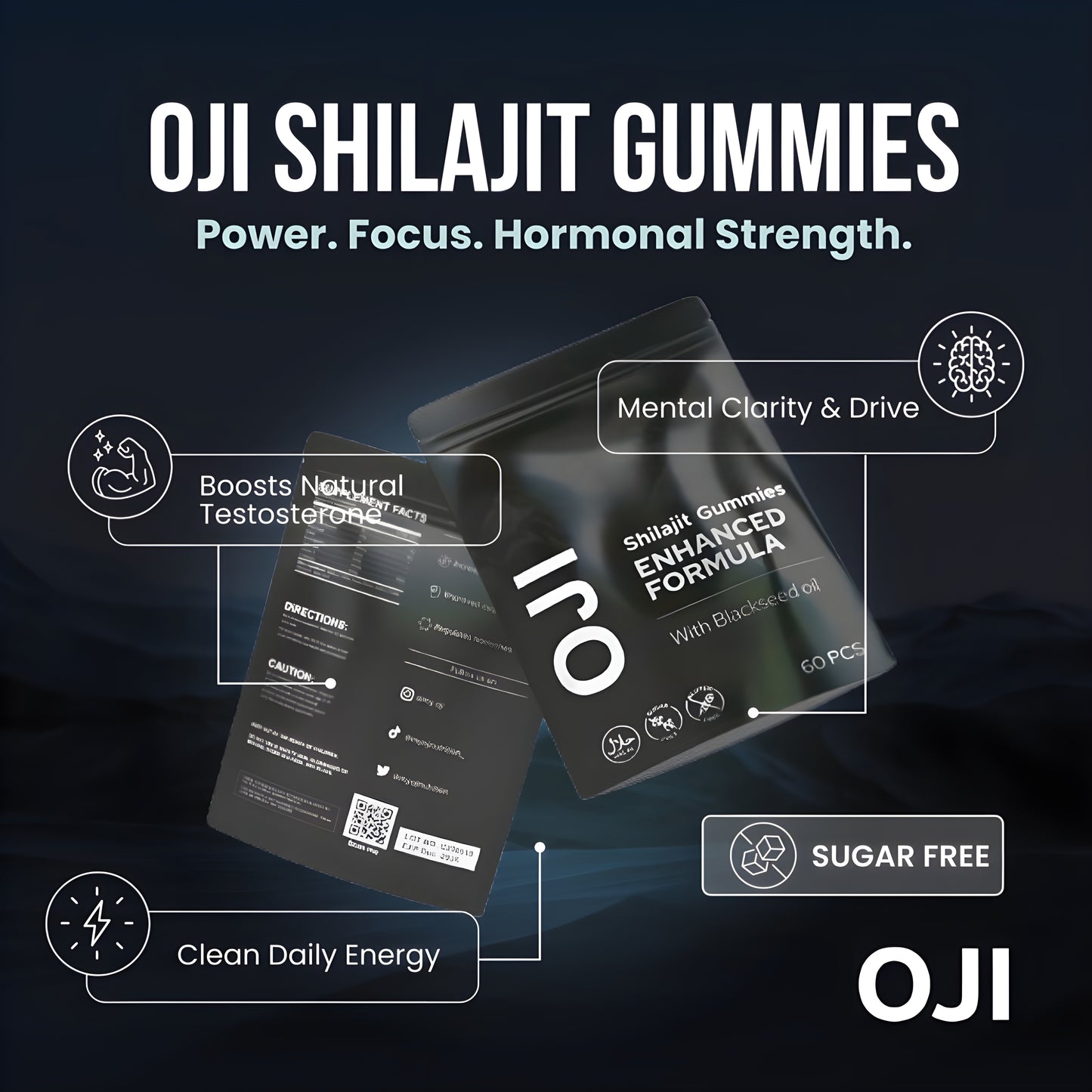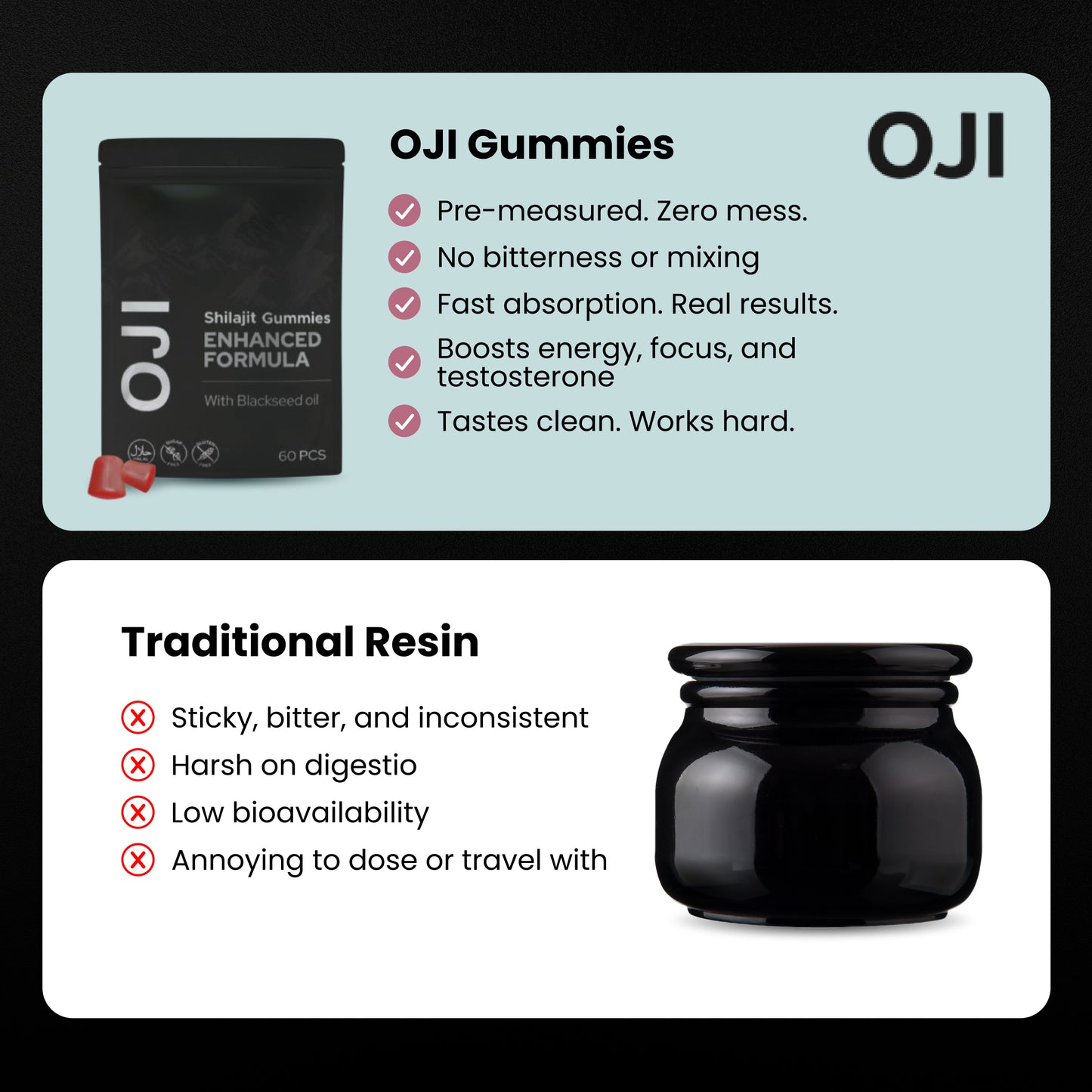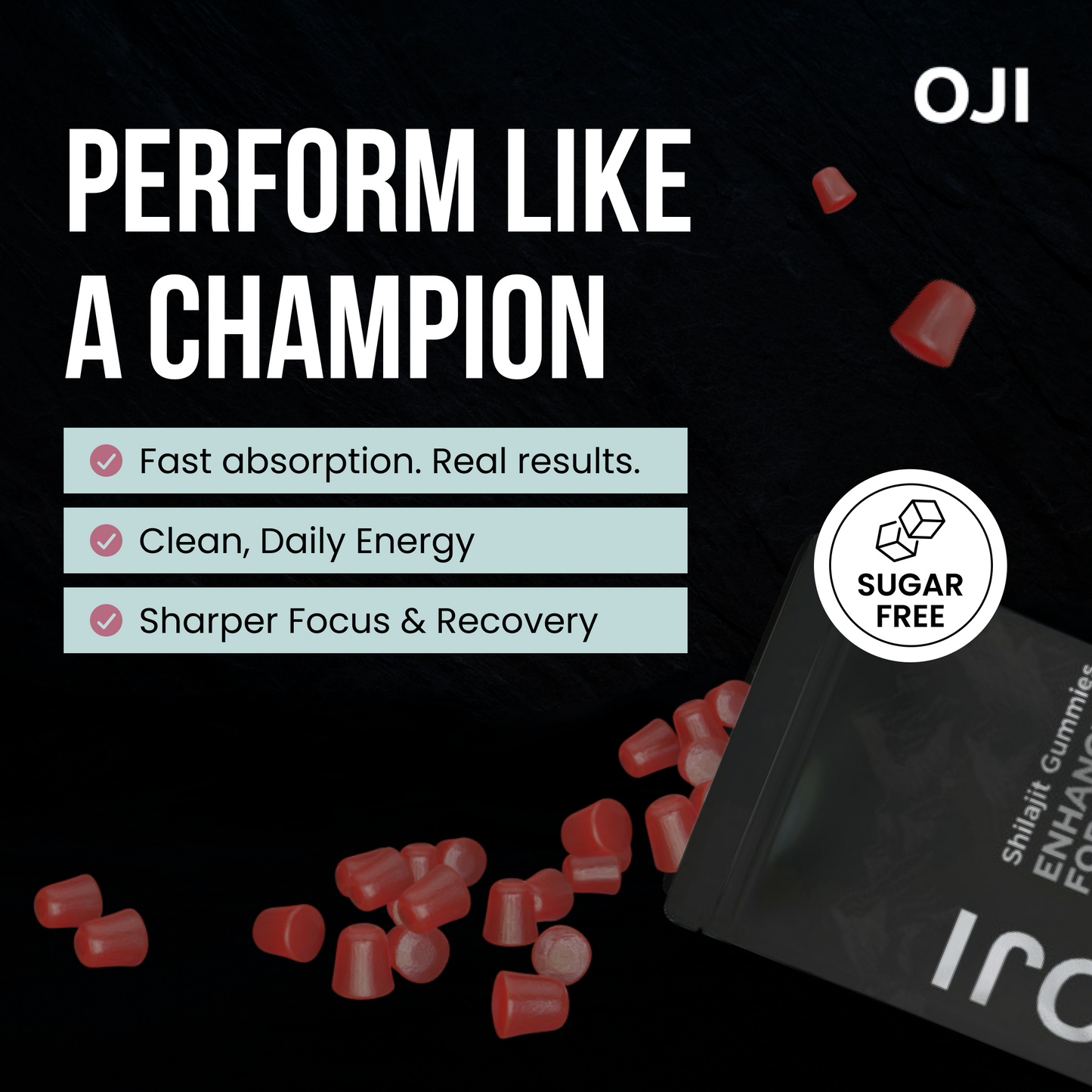Unlock Your Natural Energy Potential
Ditch the caffeine crashes and unlock sustained energy. This listicle reveals seven powerful, non-caffeine energy boosters to help you optimise your physical and mental performance. Discover how exercise, hydration, adaptogenic herbs, strategic protein intake, breathwork, light exposure, and cold exposure therapy can naturally boost your energy levels. Whether you're a fitness enthusiast, busy professional, or simply seeking better vitality, these non-caffeine energy boosters offer effective solutions. Stop relying on quick fixes – let's build your natural energy from the ground up.
1. Exercise for Energy
When you think of non caffeine energy boosters, exercise might not be the first thing that springs to mind. However, regular physical activity is a powerful, natural way to revitalise your body and mind. It works by improving cardiovascular function, increasing the production of energy-generating mitochondria within your cells, and triggering the release of endorphins, your body's natural mood boosters and pain relievers. Even short bursts of movement can stimulate blood flow, delivering vital oxygen and nutrients throughout your body, resulting in both an immediate pick-me-up and sustained energy enhancement throughout the day. This makes exercise an ideal non caffeine energy booster for busy professionals, athletes, and anyone looking to enhance their energy levels naturally.

Exercise offers a wide range of energy-boosting features. It increases oxygen circulation throughout the body, fuelling your cells and enhancing mental clarity. It stimulates the release of endorphins, providing a natural high and reducing stress. Furthermore, regular physical activity improves sleep quality, a crucial factor in maintaining consistent daytime energy levels. One of the best aspects of exercise as a non caffeine energy booster is its adaptability. It can be adjusted to any fitness level or time constraint, making it accessible to everyone from seasoned athletes to those just beginning their fitness journey.
Why Choose Exercise as a Non Caffeine Energy Booster?
Exercise deserves its top spot on this list for several reasons. Unlike caffeine or sugary energy drinks, it provides a sustained, natural energy boost without the jitters, crashes, or potential health risks associated with chemical stimulants. The benefits extend beyond just a quick energy fix; exercise simultaneously improves overall health and mental well-being, contributing to long-term vitality. And perhaps best of all, it's free or low-cost to implement, requiring no special equipment or expensive supplements.
Pros and Cons of Exercise for Energy:
Pros:
- Natural energy boost without chemicals or additives
- Provides both immediate and long-term energy benefits
- Improves overall health and mental well-being simultaneously
- Free or low-cost implementation
Cons:
- Requires consistent commitment for optimal benefits
- Initial fatigue may occur before energy-boosting effects are felt
- May be challenging for those with certain health conditions. Consult your doctor before starting a new exercise programme.
- Time investment needed
Examples of Successful Implementation:
- Morning yoga routines: Busy professionals in the UK are increasingly incorporating morning yoga into their routines to boost energy and focus throughout the day.
- Afternoon "deskercise" breaks: Progressive workplaces are replacing coffee breaks with short bursts of "deskercise" to combat afternoon energy slumps.
- "Exercise snacking": This trending energy management technique involves incorporating very short activity bursts (2-5 minutes) throughout the day.
Actionable Tips for UK Readers:
- Start with just 10 minutes of brisk walking to experience immediate benefits. A walk around your local park is a great way to start.
- Schedule workouts for mid-afternoon energy slumps rather than only mornings.
- Combine aerobic exercise (like running or cycling) with strength training for optimal energy benefits. Consider joining a local gym or fitness class.
- Try "exercise snacking" - a few minutes of squats, lunges, or jumping jacks throughout the day can make a surprising difference.
Popularised By:
The benefits of exercise for energy have been extensively researched and promoted by institutions like Harvard Health. Dr. Robert Butler's work on exercise and aging also highlights its importance for maintaining energy levels in later life. Corporate wellness programs at companies like Google and Apple further demonstrate the effectiveness of exercise as a non caffeine energy booster in improving productivity and well-being.
2. Hydration Optimization
Feeling sluggish? Before reaching for that extra cup of coffee, consider this: one of the most effective non-caffeine energy boosters might already be within your grasp. Proper hydration is absolutely fundamental to cellular energy production and overall vitality. Even mild dehydration of just 1-2% can significantly impair cognitive function, leaving you feeling drained and less focused. Optimizing both your water intake and electrolyte balance ensures efficient metabolic processes, leading to sustained energy throughout the day. This approach addresses a common underlying cause of fatigue by supporting the very foundation of how your body generates and uses energy.
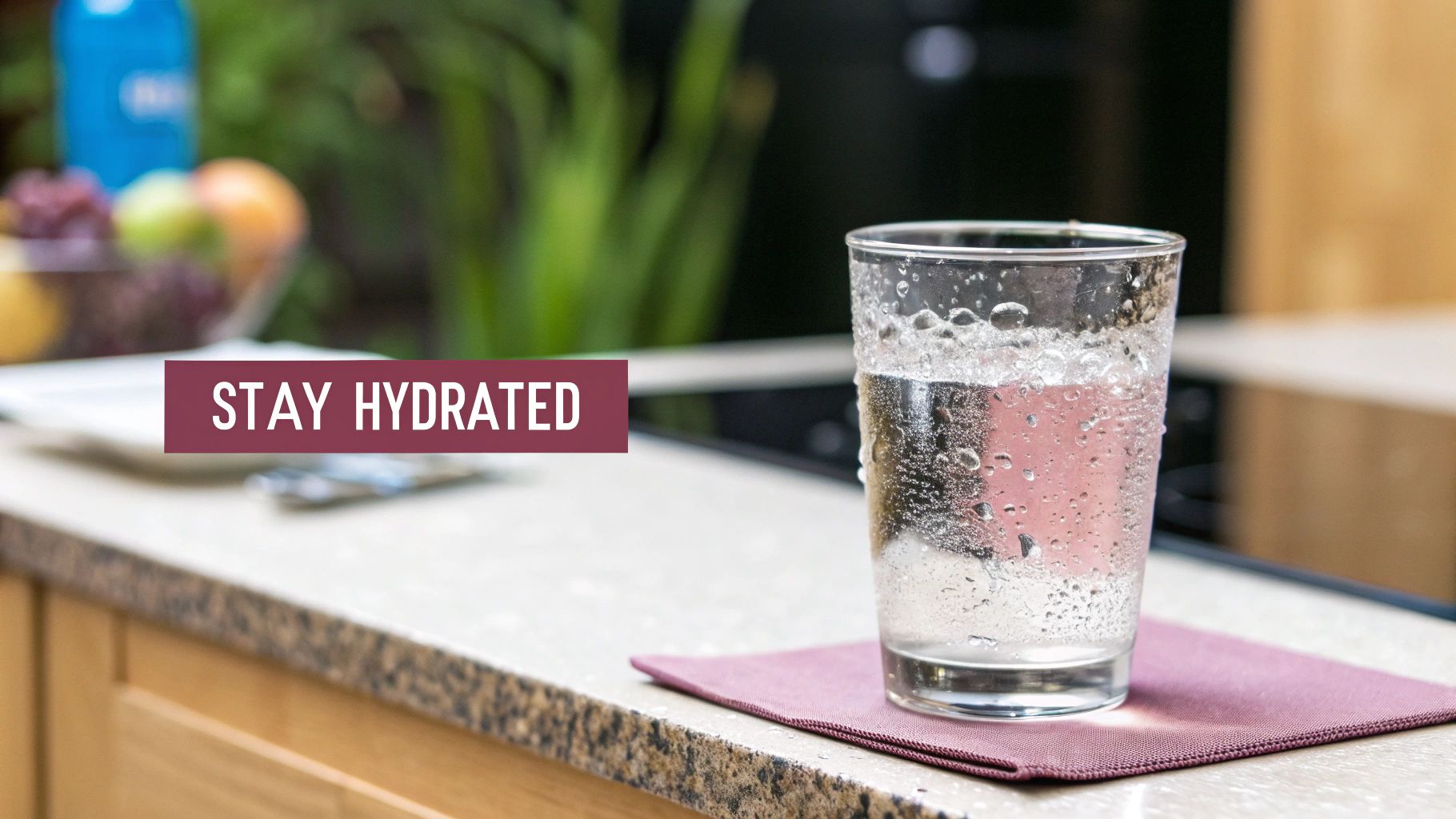
This natural energy boost works by facilitating several key bodily functions. It supports ATP (adenosine triphosphate) production, the primary energy currency of your cells. Furthermore, hydration facilitates nutrient transport to your cells, ensuring they have the fuel they need to perform optimally. It also plays a crucial role in regulating body temperature and maintaining blood volume and cardiovascular efficiency, all contributing to overall energy levels. For men over 25, maintaining optimal hydration is especially crucial for supporting hormonal balance and vitality. Fitness enthusiasts and athletes can also benefit greatly from proper hydration protocols, experiencing enhanced endurance and stamina during training and competition. Professionals seeking mental clarity and stress relief will find that proper hydration can significantly improve cognitive function and focus.
Examples of successful hydration optimization abound. Corporate hydration challenges have demonstrated improved workplace productivity, while athletes using structured hydration protocols report enhanced endurance. Even hospitals have implemented hydration monitoring for improved patient recovery times, showcasing the broad impact of this simple yet powerful practice.
Here are some actionable tips to optimise your hydration:
- Start Strong: Begin your day with 16-20oz (roughly 500-600ml) of water before any other beverages. This helps to rehydrate after sleep and sets a positive tone for the day.
- Track Your Intake: Use hydration tracking apps like WaterMinder or Hydro Coach, or simply use a marked water bottle, to ensure consistent hydration throughout the day. Branded hydration tracking bottles like HydroJug can also be motivating.
- Enhance Hydration Efficiency: Add a pinch of sea salt and a squeeze of lemon to your water to enhance hydration efficiency by replenishing electrolytes. Learn more about Hydration Optimization and the benefits of trace minerals.
- Monitor Your Urine: Follow the urine colour test: pale yellow indicates optimal hydration. If your urine is darker, it's a clear sign you need to drink more water.
Pros:
- Fast Acting: Experience immediate energy benefits, often within 20-30 minutes of proper rehydration.
- Calorie-Free: Enhance your energy levels without adding any calories.
- Accessible and Affordable: Clean drinking water is readily available and affordable for everyone in the UK.
- Targets Root Cause: Addresses a common underlying cause of fatigue, unlike stimulants that provide only temporary relief.
Cons:
- Requires Consistency: Building a consistent hydration habit requires conscious effort and attention.
- Subtle Benefits: The energy boost from hydration can be subtle compared to the jolt from caffeine or other stimulants.
- Overhydration Risk: Excessive water intake without sufficient electrolytes can lead to imbalances.
- Increased Urination: You may experience increased urination frequency initially, as your body adjusts.
Hydration optimization deserves its place on this list of non-caffeine energy boosters because it is a foundational element of overall health and vitality. It offers a sustainable, accessible, and healthy way to boost your energy levels without resorting to stimulants. By prioritising proper hydration, you can unlock your natural energy potential and experience improved physical and cognitive performance throughout the day.
3. Adaptogenic Herbs
Looking for non-caffeine energy boosters that provide sustained energy without the jitters or crashes? Adaptogenic herbs might be the answer. These non-toxic herbs and roots help your body resist various stressors, from physical exertion to mental fatigue, and maintain homeostasis – a state of internal balance. Unlike stimulants that force energy expenditure, leading to inevitable crashes, adaptogens work by regulating the HPA (hypothalamic-pituitary-adrenal) axis. This helps support adrenal function and optimise cellular energy production, resulting in sustainable energy levels throughout the day.
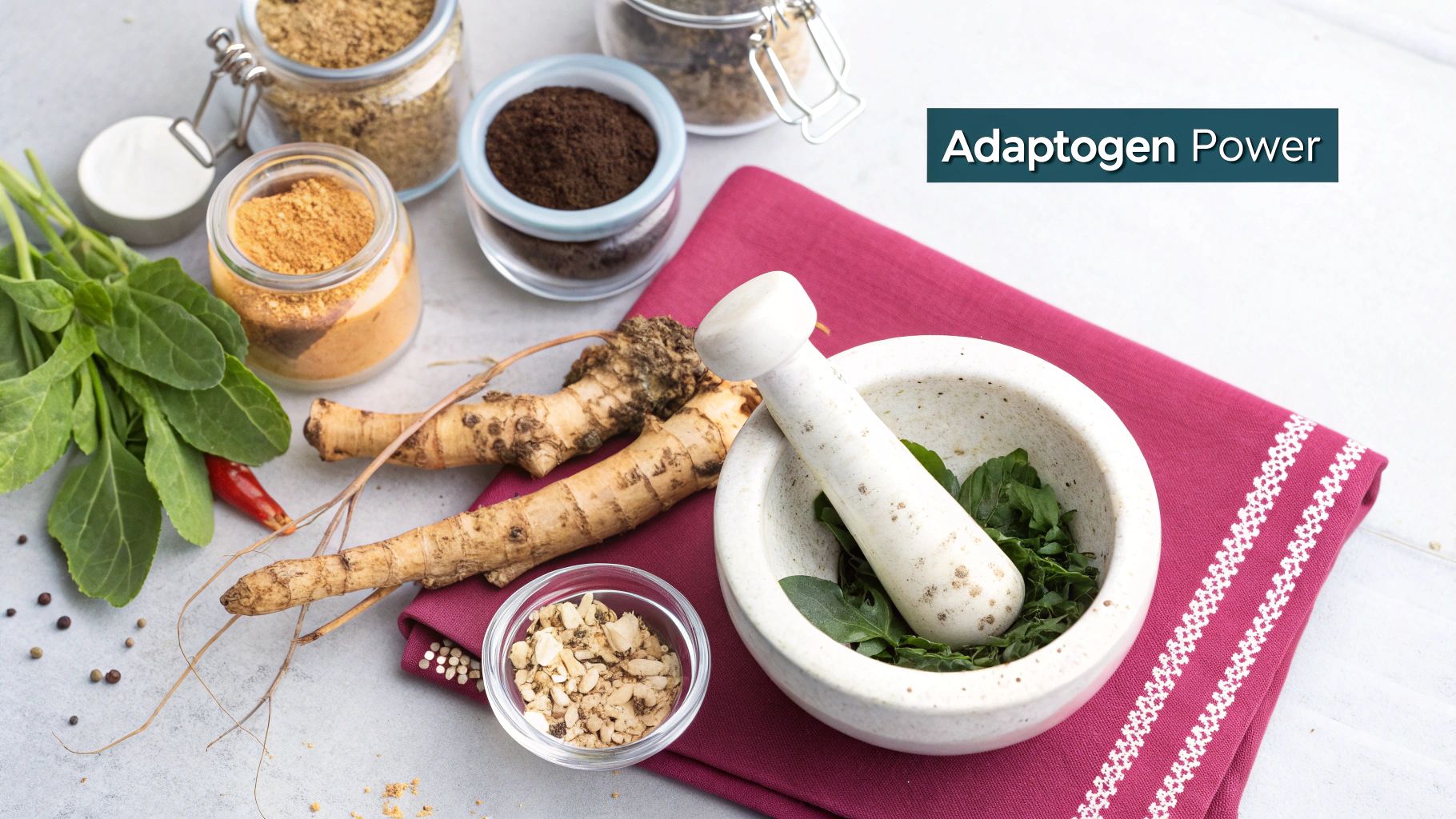
Adaptogens address the root causes of fatigue rather than just masking the symptoms. They excel at balancing stress hormones like cortisol, which, when chronically elevated, can lead to exhaustion. By supporting adrenal gland function, adaptogens enhance both physical and mental stamina. This makes them a powerful tool for anyone from fitness enthusiasts and athletes aiming to boost endurance to professionals needing sustained mental clarity and stress relief. For men over 25, adaptogens can be particularly beneficial in supporting hormonal balance and vitality.
The benefits of adaptogens are cumulative, meaning consistent use is key. For example, Rhodiola rosea has shown a 30% reduction in fatigue in clinical studies, demonstrating its potential as a potent non-caffeine energy booster. Ashwagandha, another popular adaptogen, has been used in Ayurvedic medicine for centuries for energy balance. Even Olympic athletes have turned to adaptogens like eleuthero (Siberian ginseng) for enhanced endurance. Learn more about Adaptogenic Herbs, specifically Lion's Mane mushroom.
While adaptogens offer significant advantages for sustained energy, it's important to be aware of the potential drawbacks. Effects typically build gradually rather than being immediately noticeable. Additionally, the quality and potency can vary significantly between different products, so choosing standardized extracts with verified active compounds is crucial. Adaptogens may also interact with certain medications, so consulting with a healthcare professional before incorporating them into your routine is advisable, particularly if you have pre-existing health conditions. Finally, they are often more expensive than conventional stimulants.
Tips for Using Adaptogens:
- Start Low and Go Slow: Begin with one adaptogen at a time to identify how your body responds and what works best for you.
- Consistency is Key: Take adaptogens consistently for at least 2-3 weeks to experience the full benefits.
- Quality Matters: Opt for high-quality, standardized extracts from reputable brands to ensure potency and purity.
- Morning Consumption: Taking adaptogens in the morning typically offers the best energy benefits.
Popularised by figures like Dr. Andrew Weil and herbalist David Winston, adaptogens have become increasingly mainstream, with brands like Four Sigmatic, Moon Juice, and Gaia Herbs leading the way. If you're a health-conscious adult in the UK seeking natural energy support and a plant-based, sugar-free way to combat fatigue, adaptogenic herbs deserve a place in your wellness toolkit.
4. Strategic Protein Timing
Looking for a non-caffeine energy booster that goes beyond a quick fix? Strategic protein timing could be your answer. This method involves consuming protein at specific times throughout the day to stabilise blood sugar, provide sustained energy, and support neurotransmitter production crucial for alertness and focus. Unlike sugary snacks or caffeine, which can lead to energy crashes, protein provides a steady stream of energy by maintaining consistent glucose levels. It also provides the building blocks for dopamine and norepinephrine, neurotransmitters that regulate alertness and drive. This makes it a powerful tool for combating fatigue and enhancing both physical and mental performance.

Strategic protein timing deserves a spot on this list because it offers a holistic approach to energy management. It addresses both the immediate need for energy and the long-term goal of sustained vitality. This method works by slowing the digestion of carbohydrates, preventing the spikes and crashes that can leave you feeling drained. The amino acids from protein are also utilized to synthesize neurotransmitters, further contributing to sustained energy and mental clarity. Furthermore, it complements other non-caffeine energy boosters, making it a valuable addition to any energy-boosting strategy.
The benefits of strategic protein timing are numerous. It creates sustainable energy without the jitters or crashes associated with stimulants. By balancing blood glucose levels, it provides consistent energy throughout the day, improving focus and productivity. For fitness enthusiasts and athletes, it supports muscle recovery and enhances metabolic function, contributing to improved training capacity. Moreover, it can positively impact body composition, making it a win-win for both energy levels and overall health. Some examples of successful implementation include Silicon Valley executives using protein timing protocols reporting 40% increased productivity, CrossFit athletes implementing the strategy for improved training capacity, and clinical research demonstrating that morning protein consumption enhances alertness throughout the day.
Pros:
- Creates sustainable energy without stimulants
- Improves body composition while enhancing energy
- Addresses both short and long-term energy needs
- Complements other energy-boosting strategies
Cons:
- Requires planning and food preparation
- May be challenging for those with dietary restrictions
- Quality protein sources can be expensive
- Less convenient than supplement-based approaches
Tips for Implementing Strategic Protein Timing:
- Morning Boost: Include 20-30g of protein within 30 minutes of waking up to kickstart your metabolism and set the tone for sustained energy throughout the day.
- Afternoon Slump Solution: Pair afternoon carbohydrates with at least 10g of protein to prevent energy dips and maintain focus.
- Emergency Energy: Keep protein-rich snacks readily accessible for those moments when you need a quick energy boost. Think hard-boiled eggs, protein bars (like Perfect Bar, RXBAR, or Quest, popular in the UK), or a handful of nuts.
- Variety is Key: Consider both animal and plant-based protein sources to ensure a varied amino acid profile.
This approach, popularized by experts like Dr. Gabrielle Lyon and performance coach Stan Efferding, is becoming increasingly recognized for its efficacy in boosting energy naturally. If you're a health-conscious adult, a fitness enthusiast, or a professional seeking mental clarity and stress relief, strategic protein timing is a valuable tool to consider. Whether you're looking to boost your productivity, improve your athletic performance, or simply feel more energized throughout the day, this non-caffeine energy booster can help you achieve your goals.
5. Breath Work Techniques: Unleash Your Natural Energy Reserves
Feeling sluggish? Don't reach for that extra cuppa just yet. Breath work techniques offer a powerful, caffeine-free way to boost your energy levels naturally, making them a valuable addition to any list of non-caffeine energy boosters. By consciously controlling your breathing patterns, you can optimise oxygen delivery, stimulate your nervous system, and release energy-promoting neurotransmitters – all without relying on external stimulants. This makes it a particularly attractive option for health-conscious adults in the UK seeking natural energy support, as well as men over 25 focused on hormonal balance and vitality.
Breath work differs from passive breathing. While we breathe automatically, active breath techniques create specific physiological changes that can quickly shift your body from fatigue to alertness. This works by increasing oxygen saturation in your blood and tissues, stimulating the vagus nerve for improved energy regulation, and activating specific brain regions associated with alertness. Unlike caffeine or sugary snacks, the effects are achieved without any artificial substances.
The benefits extend beyond a quick energy fix. Breath work techniques can be performed anywhere, anytime, with no equipment, empowering you to manage your energy levels throughout the day. It's completely free and has no negative side effects or energy crashes, a significant advantage over caffeine and sugar-laden energy drinks. This accessibility and lack of downsides make it a particularly compelling option for busy professionals needing mental clarity and stress relief, fitness enthusiasts, and athletes aiming to boost stamina.
Real-World Examples:
The power of breath work isn't just theoretical. From elite athletes to high-performing professionals, people are harnessing its potential:
- Navy SEALs: These elite operatives use box breathing (equal duration inhales, holds, exhales, and holds) for sustained alertness during high-stress operations.
- Olympic Athletes: Many athletes utilize breath work before competitions to achieve optimal energy and focus.
- Silicon Valley Companies: Some companies have implemented breathwork breaks, reporting productivity increases of up to 23%.
Actionable Tips for Boosting Your Energy:
Want to experience the benefits for yourself? Try these techniques:
- Physiological Sighing: Inhale deeply, then inhale a second time before releasing a long, slow exhale. This is excellent for an immediate energy boost when you're feeling drained.
- Coherence Breathing: Breathe in and out for an equal count (e.g., 5 seconds in, 5 seconds out) for 5 minutes. This helps regulate your nervous system and combat fatigue.
- Right-Nostril Breathing: Breathing primarily through your right nostril can be energizing. Try closing your left nostril gently with your finger and breathing deeply through your right nostril.
- Movement Integration: Combine breath work with brief movement, like stretching or a quick walk, to amplify the energizing effects.
Pros and Cons:
Pros:
- Immediate effects, often within 60-90 seconds
- Completely free and always accessible
- No negative side effects or energy crashes
- Empowers personal energy management
Cons:
- Requires practice to master the techniques
- Effects may be shorter-lasting than other methods
- Some techniques not suitable during certain health conditions (consult your doctor if you have any concerns)
- May feel uncomfortable or unusual initially
Popularized By:
Breath work has gained significant traction thanks to the work of individuals like Dr. Andrew Huberman, known for his neuroscience-based protocols, and Wim Hof, whose breathing method is praised for its energy and immune-boosting effects. Apps like Breathwrk and Prana Breath also provide guided energizing sessions, making it easier than ever to incorporate breath work into your daily routine.
While breath work might require a bit of practice, its accessibility, lack of side effects, and rapid energizing potential make it a worthwhile addition to your non-caffeine energy booster toolkit. Whether you’re a busy professional seeking sustained focus or an athlete looking for a natural performance enhancer, exploring the power of your breath can unlock new levels of vitality.
6. Light Exposure Optimization: Harness the Power of Light for Natural Energy
Looking for non-caffeine energy boosters? One of the most effective, yet often overlooked, methods is light exposure optimization. This approach leverages the body's natural response to light to regulate your circadian rhythm, boost alertness, and enhance overall vitality. It's a powerful, non-ingestible way to increase energy levels without resorting to stimulants.
Light, particularly blue-enriched light and natural sunlight, plays a crucial role in regulating our internal clock. By strategically exposing yourself to specific wavelengths of light, you can influence your body's production of hormones like melatonin and cortisol, directly impacting your energy levels. This works by suppressing melatonin production during the day, promoting wakefulness, and triggering cellular energy metabolism. This approach essentially harnesses the power of photobiomodulation – using light to stimulate mitochondrial activity and increase energy production at a cellular level.
How Light Exposure Optimization Works:
Light exposure optimization works by targeting specific photoreceptors in the eyes that connect directly to the brain's suprachiasmatic nucleus (SCN), the body’s master clock. The SCN then orchestrates a cascade of hormonal changes that influence sleep-wake cycles, cortisol production, and overall energy levels. Optimizing light exposure essentially fine-tunes this system for peak performance.
Features and Benefits:
- Regulates Circadian Rhythm: Consistent light exposure helps synchronize your internal clock, leading to improved sleep quality and more predictable energy peaks throughout the day.
- Increases Cortisol: Light exposure stimulates cortisol production at appropriate times, promoting natural alertness and focus during the day.
- Suppresses Daytime Melatonin: By minimizing melatonin production during daylight hours, light exposure helps maintain wakefulness and prevents daytime drowsiness.
- Triggers Mitochondrial Activity: Photobiomodulation, the process of using light to stimulate cellular function, can boost mitochondrial activity and increase energy production within cells.
Pros:
- Works in harmony with the body's natural energy regulation systems.
- Provides additional benefits beyond energy, including mood enhancement and improved sleep quality.
- Free when using natural sunlight.
- Cumulative benefits with consistent practice.
Cons:
- Effectiveness can vary depending on the season and geographic location, especially in the UK where winter days are shorter.
- Quality light therapy devices can be an investment.
- Requires timing discipline for optimal results.
- May disrupt sleep if used improperly in the evening hours.
Examples of Successful Implementation:
- NASA: NASA utilizes specific light wavelengths to help astronauts maintain alertness and regulate their circadian rhythms during space missions.
- Scandinavian Workplaces: Companies in Scandinavia have implemented dynamic lighting systems that mimic natural light patterns, reporting productivity increases of up to 20%.
- Schools: Some schools have introduced blue-enriched lighting in classrooms, observing improvements in student attention and academic performance.
Actionable Tips for UK Residents:
- Morning Sunlight: Aim for 10-20 minutes of direct sunlight within 30 minutes of waking, even on cloudy days. This helps suppress melatonin and kickstart your circadian rhythm.
- Midday Boost: If you experience a midday energy slump, consider using a blue-enriched light therapy lamp (10,000 lux) for 15-30 minutes.
- Evening Darkness: Create contrast by limiting exposure to bright light, especially blue light from screens, in the evening hours. This allows melatonin levels to rise naturally, preparing your body for sleep.
- Winter Light Therapy: During the shorter winter days in the UK, a light therapy device can be particularly beneficial in combating seasonal affective disorder (SAD) and maintaining energy levels.
Why Light Exposure Optimization Deserves a Place on This List:
Light exposure optimization offers a natural, non-invasive, and highly effective way to boost energy levels. It works by addressing the root cause of many energy problems – a dysregulated circadian rhythm. For health-conscious adults, fitness enthusiasts, professionals, and anyone seeking a sustainable approach to energy management, light exposure optimization is a powerful tool. This method is particularly relevant to men over 25 who are focused on hormonal balance and vitality, as optimizing light exposure can positively influence testosterone levels and overall hormonal health. Furthermore, for those interested in plant-based, sugar-free solutions, light exposure optimization provides a completely natural alternative to traditional energy boosters.
Popularized By:
- Dr. Satchin Panda's research on circadian biology
- Brands like Phillips HUE, Human Charger, and Re-Timer
- Dr. Michael Breus's chronotype optimization protocols
7. Cold Exposure Therapy: A Chilling Way to Boost Your Energy
Looking for non-caffeine energy boosters? Look no further than your own shower. Cold exposure therapy, a practice involving brief, controlled exposure to cold temperatures, offers a surprisingly effective way to invigorate your body and mind without relying on stimulants. This practice triggers a cascade of physiological responses that can significantly boost energy levels, making it a valuable tool for anyone from busy professionals to dedicated athletes. Learn more about Cold Exposure Therapy although note this article discusses shilajit, it relates to the broader topic of natural energy enhancement.
How does it work? Cold exposure activates brown adipose tissue (brown fat), a type of fat that generates heat by burning calories. This process, known as thermogenesis, increases your metabolic rate and provides an immediate energy boost. Simultaneously, cold therapy triggers the release of norepinephrine, a natural hormone that increases alertness, focus, and energy. Furthermore, it enhances mitochondrial efficiency, the powerhouses of your cells, leading to improved cellular energy production. Finally, cold exposure improves blood circulation and oxygen delivery throughout the body, contributing to a feeling of overall vitality.
The benefits of cold exposure therapy extend beyond the immediate energy boost. Consistent practice can build resilience to stress and fatigue over time, leading to sustained energy levels throughout the day. It's not surprising, then, that examples of successful implementation abound. Professional athletes utilize cold plunges to enhance training capacity and recovery, while tech executives report significant productivity boosts following morning cold showers. Even Dutch Olympians incorporating Wim Hof methods, a popularized form of cold exposure, have demonstrated improved performance metrics.
Features and Benefits of Cold Exposure Therapy:
- Triggers Norepinephrine Release: This natural energy hormone provides a quick and noticeable boost in alertness and focus.
- Activates Brown Fat Thermogenesis: Increased metabolism through brown fat activation leads to higher energy expenditure and a natural energy boost.
- Improves Mitochondrial Efficiency: Enhanced cellular energy production translates into more sustained energy throughout the day.
- Enhances Blood Circulation: Improved oxygen delivery to the body's tissues contributes to overall vitality and energy levels.
Pros:
- Provides an immediate energy boost within minutes.
- Creates lasting effects that extend hours beyond exposure.
- Builds resilience to stress and fatigue over time.
- Offers numerous additional health benefits, beyond just energy boosts.
Cons:
- The initial sensation can be uncomfortable, especially in the UK's colder climate.
- Requires gradual adaptation for safety.
- May be contraindicated for certain cardiovascular conditions; consult your doctor before starting.
- Requires consistent practice for cumulative benefits.
Tips for Incorporating Cold Exposure Therapy:
- Start Small: Begin with 15-30 seconds of cold water at the end of your shower.
- Gradual Progression: Gradually increase the duration of cold exposure to 2-3 minutes as your body adapts.
- Controlled Breathing: Focus on controlled, deep breathing during exposure to maximize benefits and manage the initial discomfort.
- Face/Head Exposure: For a maximum energy boost, try exposing your face and head to cold water for 30 seconds.
Cold exposure therapy deserves its place on this list of non-caffeine energy boosters because it offers a natural, sustainable, and accessible way to enhance energy levels. While the initial shock might seem daunting, the invigorating and long-lasting benefits make it a worthwhile practice for anyone seeking a healthy and effective way to boost their energy, particularly those health-conscious adults, men over 25, fitness enthusiasts, and busy professionals in the UK looking for natural support for hormonal balance, vitality, stamina, mental clarity, and stress relief. It aligns perfectly with a plant-based, sugar-free lifestyle by providing a drug-free method for enhancing energy. Remember to consult your doctor if you have any underlying health conditions.
7 Non-Caffeine Energy Boosters Compared
| Method | Implementation Complexity 🔄 | Resource Requirements 💡 | Expected Outcomes 📊 | Ideal Use Cases 💡 | Key Advantages ⭐ |
|---|---|---|---|---|---|
| Exercise for Energy | Moderate: Requires regular commitment and time | Low: Mostly no cost, needs space and minimal equipment | Immediate and long-term energy boost, improved health | Daily energy management, office breaks, fitness levels | Natural, improves health & mood, flexible intensity |
| Hydration Optimization | Low: Habit formation needed | Very low: Water & electrolytes | Quick energy improvement, sustained metabolic support | Everyone, athletes, workplace productivity | Immediate effects, affordable, addresses common fatigue |
| Adaptogenic Herbs | Moderate: Consistent use over weeks | Moderate: Quality supplements or herbs | Gradual sustained energy, stress hormone balance | Chronic fatigue, stress management | No jitters/crashes, supports adrenal health |
| Strategic Protein Timing | Moderate: Requires planning and meal prep | Moderate-High: Quality protein sources | Steady energy, blood sugar stability, muscle support | Busy professionals, athletes, weight & energy management | Sustainable energy, supports metabolism and recovery |
| Breath Work Techniques | Low-Moderate: Practice and technique learning | None: No equipment needed | Immediate energy boost, nervous system activation | Stressful moments, quick alertness, anytime anywhere | Instant effect, free, safe, portable |
| Light Exposure Optimization | Moderate: Requires timing discipline | Low-High: Sunlight (free) or light devices | Regulated circadian rhythm, alertness, mood enhancement | Seasonal fatigue, shift workers, office environments | Works with body’s biology, mood & energy benefits |
| Cold Exposure Therapy | Moderate-High: Requires adaptation and consistency | Low-Moderate: Cold water, specialized equipment optional | Immediate and lasting energy boost, metabolic gains | Athletes, stress resilience training, productivity boost | Fast, durable effects, improves metabolism |
Embrace Your Energized Self
From incorporating invigorating exercise and optimizing hydration to exploring the power of adaptogenic herbs and breathwork techniques, this article has explored a range of effective non-caffeine energy boosters. Remember, prioritizing strategic protein intake, optimizing your exposure to light, and even considering cold exposure therapy can significantly impact your energy levels throughout the day. Mastering these natural approaches offers profound benefits, from increased stamina for fitness enthusiasts and athletes to enhanced mental clarity and stress relief for busy professionals. For those seeking a plant-based, sugar-free way to further support their energy journey, incorporating a quality shilajit supplement can provide a powerful edge.
If you're looking for more comprehensive information on how to boost your energy naturally, especially in the UK, be sure to check out this guide on natural energy boosters from Pulse, offering additional tips and insights for revitalizing your day.
By embracing these non-caffeine energy boosters, you're not just combating fatigue; you're investing in your overall well-being and unlocking your body's natural potential for sustained energy. Feeling constantly drained? Discover how Oji Shilajit, a premium shilajit gummy formulated with essential nutrients, can complement your non-caffeine energy boosting strategies and support your journey to optimal vitality. Reclaim your energy, naturally.


